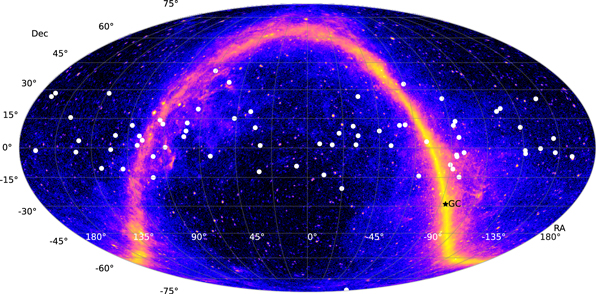
A neutrino is an elementary particle that practically does not interact with matter. This is its uniqueness: having been born as a result of nuclear processes, it can fly huge distances through outer space, even through stars and planets, without colliding with a single atom of matter. Neutrinos are one of the few cosmic “heralds” that can tell us, for example, about the processes occurring in the cores of galaxies covered with dense clouds of gas and dust. But that is why neutrinos are extremely difficult to detect.
To “hunt” for neutrinos, physicists build special neutrino telescopes – complex and bulky detectors capable of recording the passage of piece neutrinos per year. With the detection of neutrinos, too, not everything is simple – particles come in different energies and they need their own separate devices. Relatively recently, neutrino telescopes began to work, which managed to find high-energy neutrinos coming from deep space. American IceCube in Antarctica, the Russian Baikal Neutrino Telescope (also known as Project Baikal-GVD), European KM3NeT – three such neutrino detectors, the data of which are analyzed by physicists around the world. But they still have not seen the “home” neutrino radiation of our Galaxy against the general neutrino background. Although from the point of view of the theory, stars with huge magnetic fields, like incoming cosmic rays, are able to give birth to neutrinos.
In a recent article in The Astrophysical Journal Letters a group of physicists from the Institute for Nuclear Research of the Russian Academy of Sciences, the Physical Institute of the Russian Academy of Sciences, the Moscow Institute of Physics and Technology and the Institute of Radio Astronomy of the Max Planck Society (Germany) write that they managed to detect precisely the galactic neutrino radiation. To do this, the researchers collected 70 cases of registration of high-energy neutrinos on the detector. IceCube for a total of ten years of observation. It turned out that neutrinos do indeed concentrate towards the galactic plane, but not in a narrow band – the width of the neutrino Milky Way turned out to be like two lengths of the Big Dipper bucket. Perhaps this indicates that a significant part of the neutrino is born not just in our Galaxy, but in its nearest region. This is yet to be dealt with.
As a corresponding member of the Russian Academy of Sciences notes Yuri Kovalev (FIAN AND MIPT): “New, more advanced neutrino experiments in the Northern Hemisphere – Baikal-GVD and KM3NeT – will soon make it possible to conduct a similar analysis with their data and study the area of \u200b\u200bthe galactic center in more detail. Neutrino telescopes register elementary particles “from under their feet”, and there is the center of the Galaxy for us northerners. In the meantime, focusing on the IceCube and Baikal-GVD data, we can say with confidence that the neutrino sky is not so simple – a large contribution to the astrophysical neutrino flux is made by sources of completely different classes, both galactic and extragalactic”.
According to the press service of the Moscow Institute of Physics and Technology.


